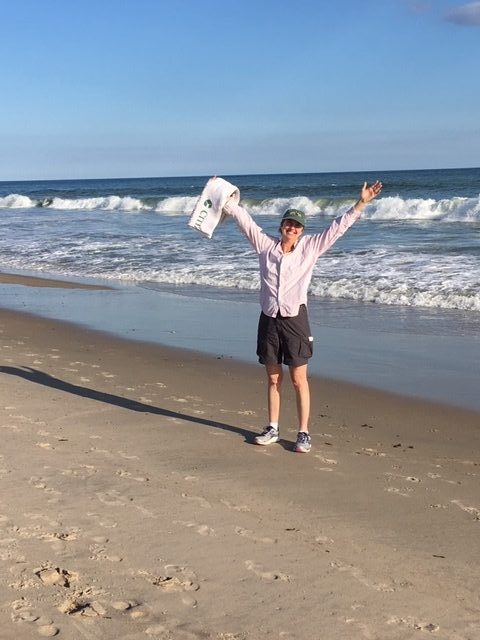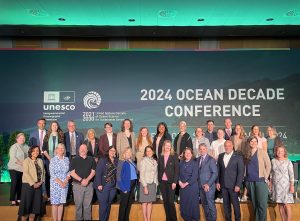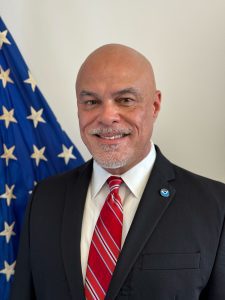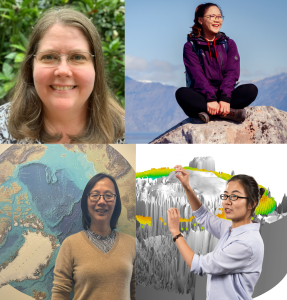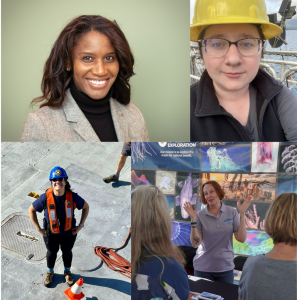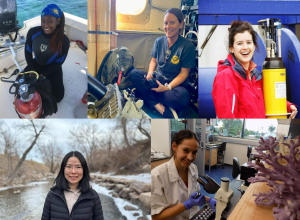To celebrate Women’s History Month, we asked women throughout NOAA Research who make lasting impacts in scientific research, leadership, and support from the field to the office to share how their work contributes to NOAA’s mission of Climate Resilience and preparing for a Climate-Ready Nation. This article highlights an interview with Monica Allen who is the Director of Public Affairs for NOAA Research. Monica is part of the NOAA Communications team serving all the line offices in NOAA.
Our conversation follows:
What does climate resilience or climate-ready nation mean to you? What would you want people to know about NOAA’s work on climate resilience?
Climate-ready nation is a nation that builds climate resilience and adaptation into all aspects of its communities for all people, and especially for people who are the most vulnerable to the harmful impacts of climate change including extreme heat, flooding and loss of homes and jobs due to a range of climate impacts. I’d want people to know that NOAA’s work on climate resilience includes strengthening our information, prediction, and resilience planning tools for the nation, states, tribes and communities. It also involves strengthening NOAA’s partnerships with other federal agencies, states, tribes, local communities and individuals to inspire communities to work together to address climate change.
What projects or research are you working on now, and how does your work contribute to climate resilience?
I’m working with my team on news releases, web stories and helping pitch stories to journalists about many ways that NOAA works with communities to build climate resilience. A few of my favorite stories include the dynamic Urban Heat Island mapping campaigns NOAA has pioneered with communities across our country and overseas, the annual Arctic Report Card that includes chapters written by Native Alaskans and others on the impacts of climate change, and new partnerships NOAA is forging to build climate resilience such as our collaboration with the American Society of Civil Engineers to develop climate-smart building codes.
What drew you to your current career or field?
I applied for a job with NOAA Communications because of a deep interest in the ocean, its power, beauty and importance to the overall wellbeing of our communities. My job leading a team of public affairs specialists at NOAA Research brings together the passions and interests that have long fueled my career from my earliest jobs. One of my first jobs as a young person was teaching swimming. After college, I worked 25 years as a journalist, covering environmental, political and social issues in primarily coastal communities in New England. Along the way I got a master’s degree in marine policy. At a certain point after covering the news, I wanted to be part of providing the news being made by the nation’s ocean agency. My work at NOAA enables me to lead other communicators as we help scientists tell stories about the amazing science, service and stewardship NOAA does every day for our nation and why it is so important to each American.
What do you enjoy most about your work?
I enjoy working with a team of communicators who are constantly devising new and ever more creative ways to get our story out to larger and more diverse audiences. I love learning from NOAA scientists. And I relish the challenge of explaining the relevance of our scientific research to Americans who may have no scientific background. I enjoy getting out in the field to introduce journalists to our scientists and the exciting work we are doing, such as our work with Saildrones to gather data designed to improve hurricane forecasts or the mission of NOAA Ocean Exploration to use NOAA Ship Okeanos Explorer to map unknown areas of the ocean or discover shipwrecks that open windows into fascinating little-known chapters of American history.
Do you have a favorite moment or accomplishment in your career?
When I was editor of the editorial page for The Standard- Times in New Bedford, Massachusetts, there were a number of fishing vessels that sank, taking the lives of local fishermen. I wrote a series of editorials over a year to advocate for safety, touching on potential policy changes and including the voices of fishing families. The series resulted in many fishing vessel owners adopting more safety measures. NOAA also stepped in to fund a safety training program for fishermen. I still remember the classes being held in a local pool and fishermen learning to don survival suits and take other measures. The editorial series was also honored with a New England newspaper award. Most importantly, the city saw a real decline in fisherman’s deaths.
What gives you hope, either with regard to science, your field in NOAA, or in general?
Since coming to NOAA in 2007, I’ve seen more women becoming leaders of NOAA’s lines, labs and programs. Working with women scientists and communicators at NOAA, I have great hope for the future that their talents are and will be recognized and they will rise up as leaders and mentors in new and surprising ways.
Special thanks to Monica Allen for participating in this interview for Women’s History Month at NOAA.
